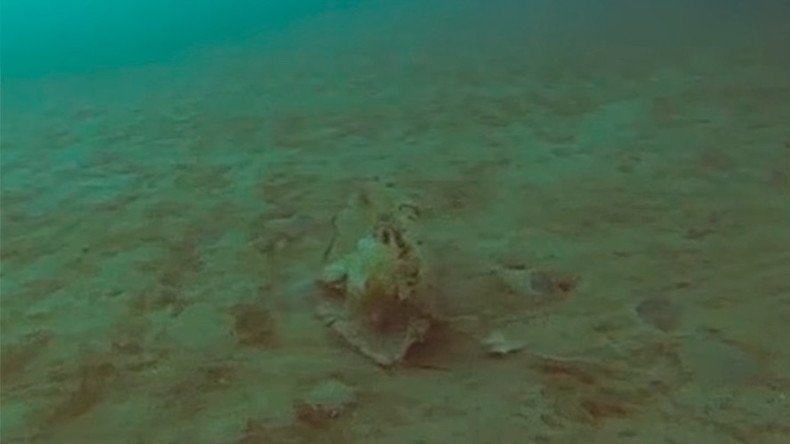Ancient Arctic jellyfish spotted by scientists in rare encounter (VIDEO)

Creatures that dwell deep below the Arctic ice are rarely seen by humans, however, a recently released video by Columbia University’s Earth Institute offers a glimpse of one of the world’s many bizarre inhabitants.
The team from Columbia University, Andy Juhl and his colleagues, used snowmobiles to access this barren arctic terrain, drilling holes in the ice and peering into the world below with video cameras. What they found surprised them.
The most interesting specimen they encountered was an ancient arctic jellyfish, which trailed its huge tentacles along the sea floor. The scientists were amazed to see the Chrysaora melanaster jellyfish, because they are generally thought to live only a few months.
Scientists had previously assumed that the jellyfish only live for a few months, and survived the winter “only in a life stage called polyps–formless masses that cling to rocks and release little baby medusae in the spring.”
However, according to Juhl, the creatures live through the winter and could even be a few years old. “One reason we were interested was, first of all, we saw them, and it was kind of weird,” Jul said.
8 legs, 1 eye, no mouth & 2 hairy antennae: 'Monster' plankton discovered in Arctic ice https://t.co/AsKRx8xdRBpic.twitter.com/mXzGqWbmhA
— RT (@RT_com) October 21, 2017
His hypothesis: “Cold winters, when sea ice is thick and long-lasting, are good for Chrysaora survival,” because “the ice probably shields the medusae from turbulent winter storms, and the low water temperatures reduce their metabolism enough for them to subsist on relatively little food.”
“Life under sea ice is like living in a refrigerator–everything slows down,” he added. However the question on everyone’s lips is “Do they sting?” “I don’t know,” said Juhl. “There aren’t that many people around there swimming to find out.”












